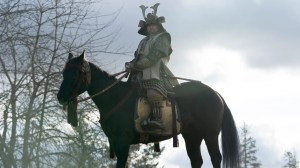God of War’s popularity has skyrocketed. It’s PlayStation’s biggest IP and not just because of the gameplay, but also because it has one of the most iconic video game protagonists of all time, Kratos. The Ghost of Sparta has a rich history. From brutally ending the Greek Pantheon to building a new life within the Norse Realms, there are many layers to Kratos’ story.
Videos by ComicBook.com
But even the most devoted fans might have missed out on key details. Facts both inside and outside the video games that are hard to come across if you aren’t a die-hard fan. So, whether you’re a player from the early Greek saga days or have just joined in on Kratos’ most recent endeavors across the Nine Realms, here are surprising facts about the God of War you might not know.
1) Kratos Has an Even More Tragic Backstory in the 2010 Comic
We know much about Kratos and his daughter, Calliope. However, the 2010 God of War comic book dives deeper into their backstories, and if you haven’t read it, you’re missing out on a key memory. In the comic, it’s revealed that Kratos’ daughter, Calliope, was cursed by Ares with a skin sickness. Afraid that she will be executed by the King, Kratos sets out to find the Asclepius’ ambrosia, a fabled medicine that can cure any condition.
Kratos overcomes a lot of obstacles to find the said ambrosia. He eventually heals Calliope and gives the remaining ambrosia to the kingdom. Later, after the events of God of War take place and Kratos kills Ares, he returns to the place where he found the ambrosia. Kratos then destroys the tree since the ambrosia could revive a fallen member of the Greek Pantheon.
2) Kratos Has Fought Sackboy, Raiden, & Many More
In 2012, a crossover game called PlayStation All-Stars Battle Royale was released. It featured characters like Kratos, Sly Cooper, Raiden, Ratchet & Clank, as well as many other heroes from across PlayStation’s most prominent IPs. All-Stars Battle Royale was styled like the Super Smash Bros. games, that is, like a platform fighter.
Given this was a crossover game of no narrative importance, everyone assumed it was non-canonical. However, there’s a dialogue in God of War: Ragnarok that suggests otherwise. During free roam, Mimir asks Kratos about a rumor saying he fought in a tournament against “beasts, scoundrels, princesses, the undead, automatons, and… history’s greatest musician”. Kratos replies, “I would not speak of this.” While that’s not a firm yes, it definitely does imply that Kratos has traveled through the multiverse.
3) Kratos’ Skin Tone Is A Disturbing Reminder
Have you ever wondered why Kratos has white skin? Fans of the Greek God of War saga know the answer to this. But if you’re someone who joined the series from God of War (2018), and only knows bits and pieces of the old games, you probably don’t know why Kratos is pale white.
In the first God of War game, Kratos murders his wife and daughter after being manipulated by Ares. An Oracle then curses Kratos and binds the ashes of his family to his skin, resulting in a white tone. Since that day, Kratos became known as the “Ghost of Sparta” and lives each day carrying the weight of his past literally on his skin.
4) Kratos Originally Had Blue Tattoos
One of the fun “what ifs” about Kratos is how he’d look with a blue tattoo instead of red. But most people don’t know that Kratos was originally designed with blue tattoos. In fact, it was only a little while before God of War was released that the tattoo color was changed to red.
Back in the very early 2000s, Diablo 2 was one of the most popular games on the market. It had a character called The Barbarian, a grumpy-looking warrior with blue tattoos. Kratos’ build was quite similar to The Barbarian, and while the tattoo design was different, the blue color had some resemblance. As per the developers, very late into production, they realized that this could become a legal issue, or Kratos might be mocked as a copycat of The Barbarian. So, Santa Monica decided to change the color, opting for red in the final version.
Crazy to think the iconic Kratos would have had blue tattoos if not for a random Diablo character whom hardly anyone remembers.
5) Kratos Has A Brother
The God of War: Ghost of Sparta spin-off shows more of Kratos’ childhood. It was one filled with trials and tribulations, but Kratos saw the good in life, that was, until his brother Deimos was kidnapped by Ares. Many years later, the events of Ghost of Sparta begin, and Kratos decides to search for his brother.
During his quest, he first locates his mother, Callisto, fights through a long list of monsters, and finally finds Deimos in the Domain of Death. Deimos and Kratos reconcile, but unfortunately, Deimos is killed shortly after by Thanatos. Kratos avenges Deimos; however, his brother’s demise is the final deciding factor in Kratos’ crusade to kill the Greek Pantheon.
6) Kratos Hates Pantheons
There’s an interesting fact about Kratos that in every single mainline God of War game, he’s killed at least one member of the Greek or Norse Pantheons. In God of War 1, it was Ares. In the second game, it was Athena. Hades, Zeus, Poseidon, and the deaths of many others followed in the third, while Baldur met his demise in God of War 2018. And most recently, Heimdall was one of the victims in God of War: Ragnarok.
Kratos was a Spartan General, then became Ares’ champion, and then took Ares’ throne as the new God of War. He then went on to wipe out the entire Greek Pantheon before disappearing and reemerging in Norse mythology. Once again, Kratos fought new deities and executed members of the Norse Pantheon this time. Kratos’ kill count is definitely very high, and from that, at least 30 were deities.
7) Kratos Has Died, A Lot
While this isn’t so in the Norse saga, Kratos has actually died plenty of times in the past. In God of War 1, he was killed by Ares, but then his soul escaped the underworld to return. In God of War 2, Zeus murdered Kratos, but his death was short-lived once again because the Titan Gaia revived him.
In almost every God of War game, Kratos has either died, come close to dying, or has been prophesied to die soon. Of course, that’s not a surprise considering Kratos frequently finds himself in life-threatening situations. Fun fact: In an early draft for God of War: Ragnarok, Kratos was going to die, too. The game would then have followed with us playing as Atreus and rescuing Kratos from Helheim. Canonically, Kratos has died about 4-5 times, and that number is bound to go up in future games. But, well, who’s keeping count?
8) Kratos’ Tattoos Have Shifted Position Between Games
Being turned from blue to red isn’t the only change Kratos’ tattoos have undergone. Now, not many fans have noticed this detail, but if you pay attention to Kratos’ tattoos between all the different God of War games, you’ll see there are subtle differences. For instance, in the Greek saga, the tattoos are clearly much bigger.
In the younger Greek Kratos, the tattoo on the arms extends below the shoulder and over the bicep. In the Norse Kratos character model, it’s limited to the shoulder area. However, there’s a bigger difference in the tattoo size and design between the God of War 1 and 2 Kratos models. In the first game, Kratos’ shoulder tattoo had a completely different design, and on the chest extension, it was big. In the second game, the design on the shoulder was changed while the chest extension size decreased by nearly half.
9) The Beard Wasn’t In The Early Concepts for God of War (2018)
Imagining Kratos without a beard would be really weird, especially following his Norse iteration. But as a matter of fact, Santa Monica wasn’t hell bent on adding the beard at all. That was more of a logical decision, which came later on.
In the early development days of God of War (2018), the studio worked with a concept artist to design Kratos. There were a number of potential models, but then the bearded version came along, and it just made sense to use that as the foundation. Kratos was supposed to be older, more mature, a bit calmer than before, and a bigger beard was a perfect physical representation of those aspects. Santa Monica decided to go with that, and today, Kratos’ beard is one of the most iconic beards in video game history.
10) Kratos Is Taller In The Old Games
There are some minor inconsistencies throughout the God of War series. One specifically about Kratos’ height. In the older Greek games, Kratos is 7 feet 8 inches tall. However, in the God of War Norse continuity, Kratos is 6 feet 4 inches tall. This was actually a Kratos redesign.
The older God of War games are more stylized. Their world scale is also large, and the fixed camera angles always make everything else, including Kratos, look small. In contrast, the newer Norse saga games are grounded. The over-the-shoulder camera view makes Kratos feel more human than demigod. The Norse world’s scale is smaller, too.
Because of the larger-than-life nature of the Greek games, Kratos being taller felt natural. However, in the Norse saga, the over-the-shoulder camera wouldn’t have worked that well, so Santa Monica adjusted Kratos’ height to better suit the narrative.








